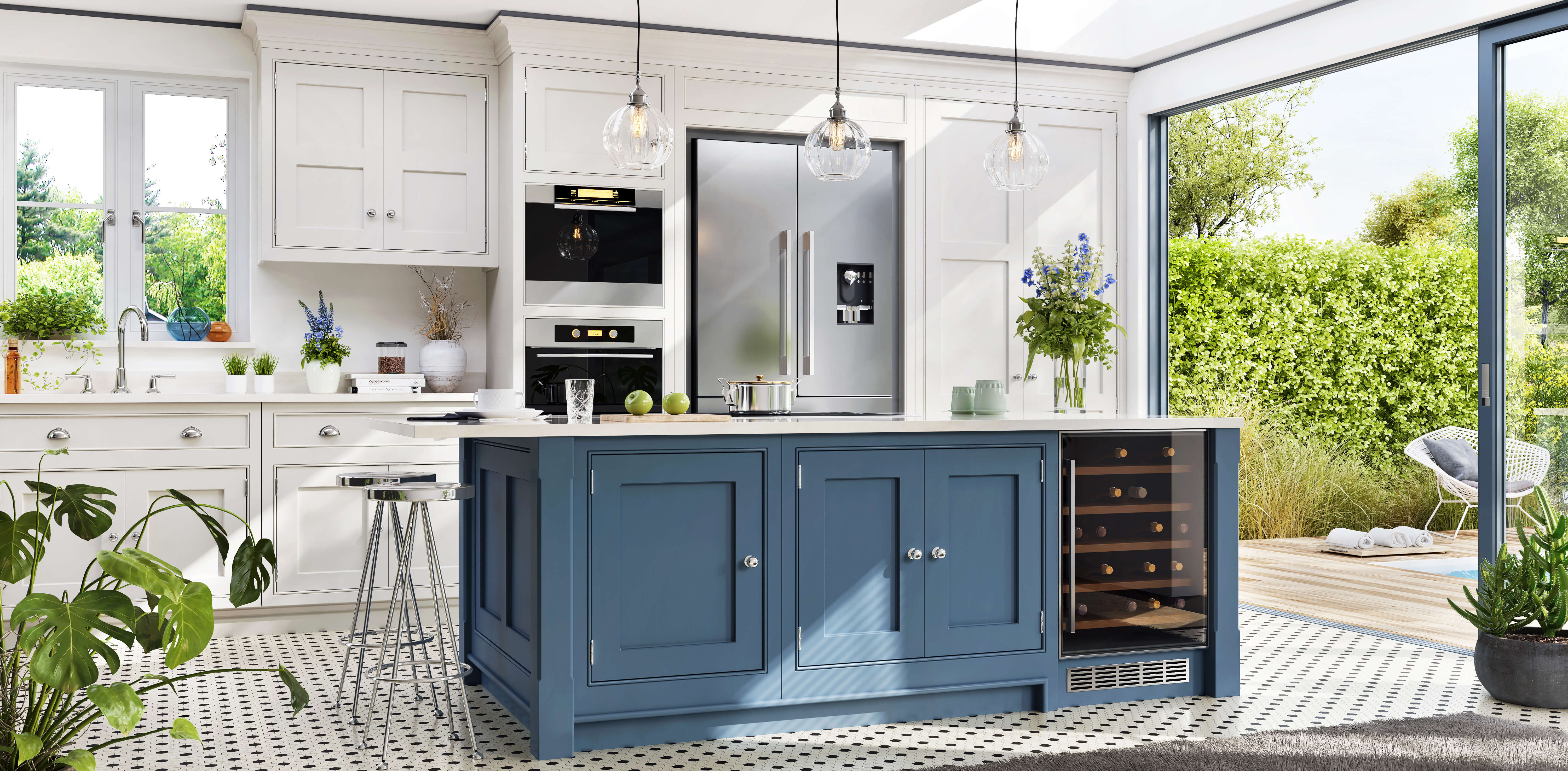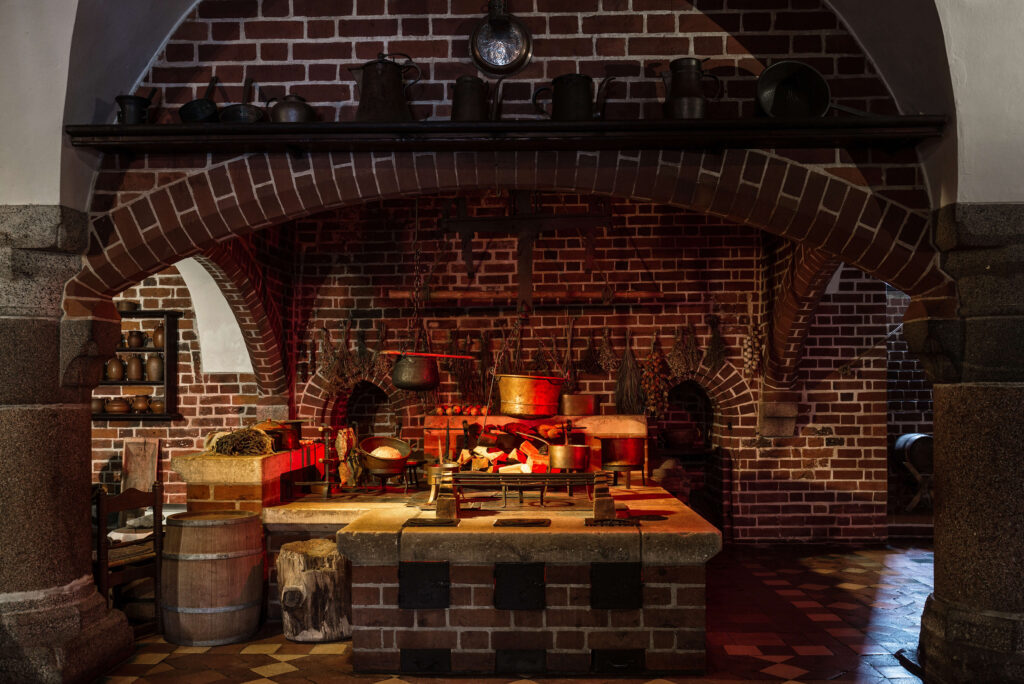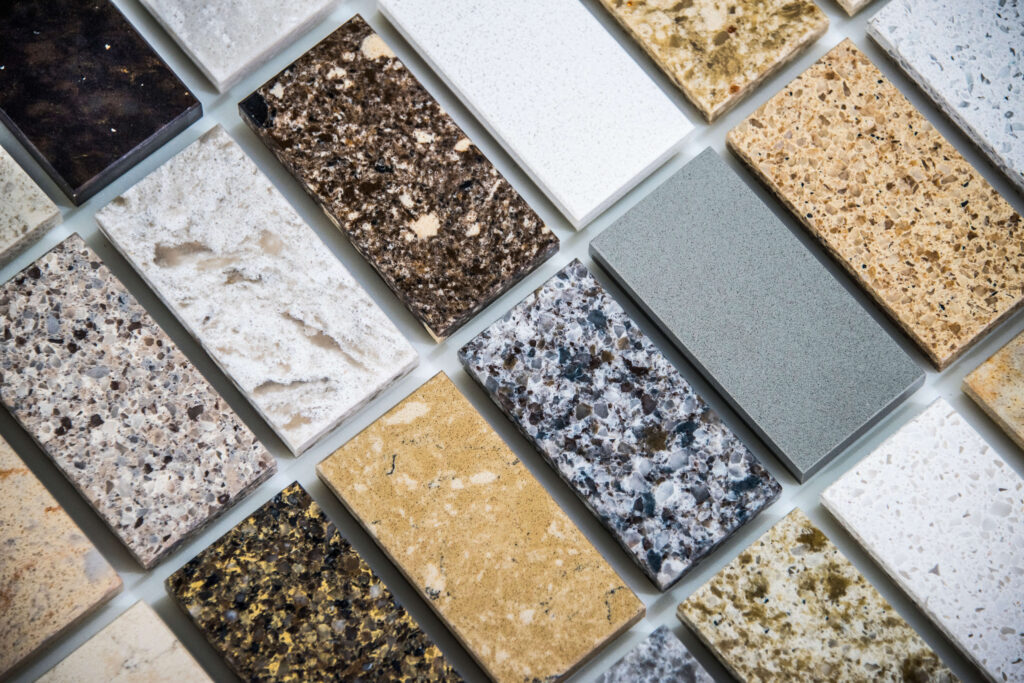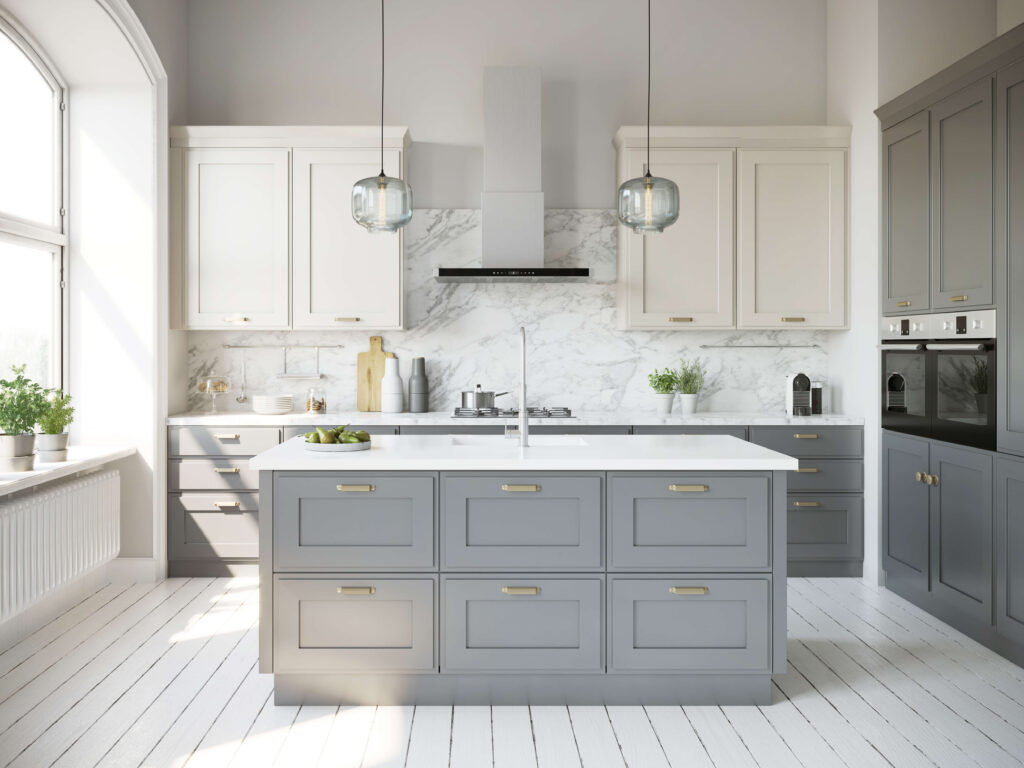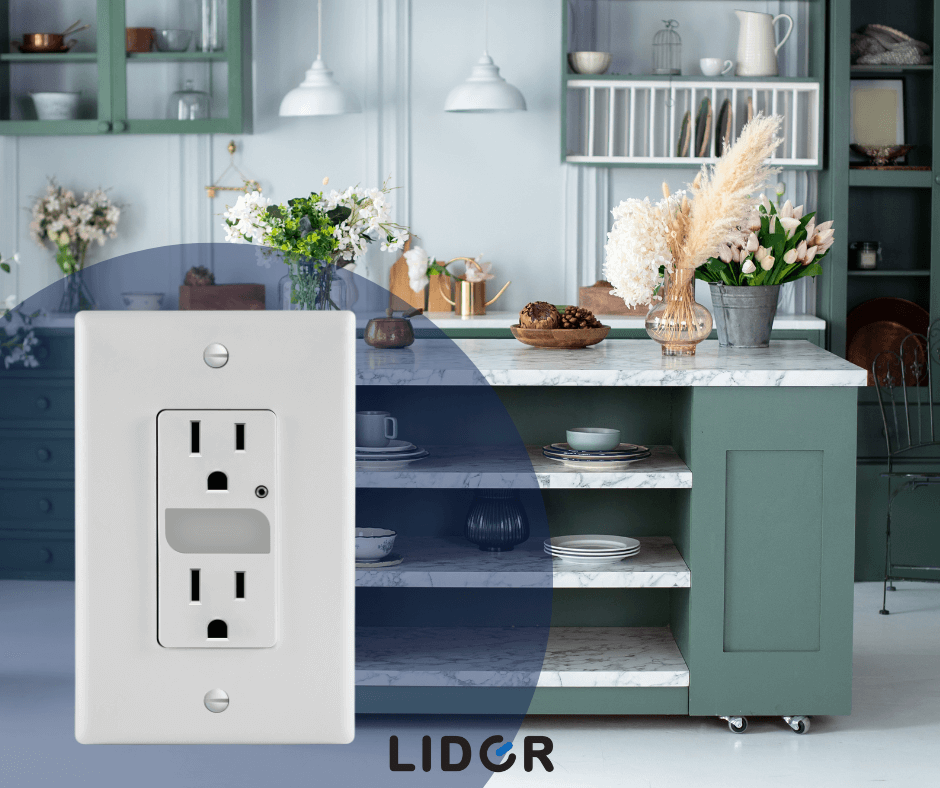No modern kitchen seems to be complete without an island. The “island” itself is a standalone countertop usually placed at the center of the kitchen. While this design concept is simple, it is incredibly versatile in terms of function and style opportunities–from the finish to features such as drawers and cabinets. Read on to learn about the history, popularity, and helpful design options for making your kitchen island an incredible statement piece.
THE HISTORY OF THE KITCHEN ISLAND
While the modern concept of the kitchen island didn’t come into play until the 1960s, the island has a rich evolutionary history. According to research sources, its precursor stretches as far back as the 1800s. At that time, kitchens were separated from the rest of the home. Modern layouts are a great divergence from this. Today, open floor plans oftentimes connect kitchens and dining areas.
The purpose of the past separation was to ensure that servants wouldn’t cause any disruptions while preparing food. It was also a hierarchical separation, creating a wall between the bustling environment of the working servants and the luxurious lifestyle of the ladies and lords they served.
In these historical kitchens, servants would utilize a large table for gathering and preparing food. This table would later evolve into what we know as the island.
By the 1950s, advances in technology and the introduction of space-saving solutions like Lazy Susans made it easier to create open floor plans. With architects like Frank Lloyd Wright working to make the heart of the home a more comfortable place, the modern kitchen island was born. It quickly rose to popularity for many reasons.
First and foremost, an island adds a lot of potential storage areas. Cabinets, shelves, and drawers can all be integrated into an island’s base to make the kitchen less cluttered. Cooking supplies and kitchen utensils can be stored away for a clean, minimalist look. Islands can be put to further practical use by hosting appliances like sinks or stoves.
An island can also be a great place to let your children spend time while you cook. They can do homework or play on the empty counter space. If you implement enough seating, such as bar stools, the space is ideal for entertaining guests. Buffet-style parties are perfect with a kitchen island–guests can surround the area and self-serve.
Evidently, the kitchen island has become a perfect centerpiece. It can define the aesthetic style of the whole room. Use it in a multitude of ways–from entertaining guests, cooking, and overseeing children, all while keeping an eye on the food.
FINISHES OR STYLES FOR YOUR ISLAND
There is an expansive catalog of materials and styles to choose from for your kitchen island countertops.
Some of the most popular options for islands are stone countertops. To start, there is granite. It comes in solid granite slabs, granite tiling, or modular granite pieces. Whichever of the three you choose, it is seen as an elegant, tough, and highly desirable material. Another well-known material is marble, which has a beautiful appearance and boasts a unique pattern in each slab.
A less prominent option is soapstone. The talc in soapstone creates a warm, milky appearance that can fit well with antique settings, but it’s relatively rare and hard to get a hold of. Quartz is another solid choice, even though it is technically synthetically engineered. Quartz is very durable and beautiful but can be rather expensive. The list of stone materials goes on, and you can look into them even further if interested.
If you want to create a distinctive look, consider glass options for your kitchen island countertop. The most obvious choice is a solid glass slab that can create a stand-out look. The material is beneficial for its high-tensile strength and resistance to bacteria. Additionally, if you’re prioritizing environmentally sustainable designs, there are recycled glass options. Recycled glass slabs can come in a fascinating, attractive crushed glass design, and recycled glass tiles are an easy DIY project.
The last of the common finish types consist of various metals. Stainless steel countertops have entered the mainstream and can bring a professional flair, mimicking that of restaurants, to any home kitchen. A recycled aluminum countertop can create a sleek and contemporary style and is extremely eco-friendly, albeit quite rare. Lastly, there are zinc countertops that can survive wear with a quick sanding and will look great with age.
There are also specialty alternatives that offer a distinctive look. Bamboo countertops are made from shredded bamboo fibers blended with resin. It’s surprisingly tough and gives a nice wood-like appearance without using wood itself. Laminate is a plastic material with great affordability and tons of choices in color and pattern. There’s also ceramic tile that can similarly be customized at an inexpensive cost.
COMPLEMENTARY KITCHEN PIECES
Though an island may be the core of your kitchen, that doesn’t mean other pieces should be neglected. With the right design choices, you can integrate the island seamlessly into your kitchen. A tried and true design choice is matching the island countertop with the rest of your space. Echoing the same material can give your kitchen a stunning, cohesive look. On the other hand, contrasting the island counter with other materials in the kitchen can create a bold talking point.
A stovetop can also complement your kitchen island nicely. There are many types of range hoods available and plenty of choices for the stove itself. Choosing a style that matches the build of your island will give a refreshing look to your prep stations. It’s sure to make a lasting impression among guests.
Matching materials in the kitchen can be an important design choice. That way, you can create an elegant color palette for the kitchen that doesn’t look too crowded or busy. A popular choice is choosing a single type of wood for the cabinets and stone for the countertops. Choosing the right materials and patterns first may provide some crucial insight into how you’d like to design the kitchen overall.
COMPLEMENTARY COLORS/PRODUCTS
One of the last things to consider when thinking about an island for your home is color options. The color of your island’s countertop and base can define the room. Many natural stones and synthetic countertops come in a vast array of colors. The base of your island can be a color that complements or contrasts the counter. There are so many aesthetics that can be created with the coordination of these alone.
To name a few, you can get into rustic, modern chic, or classic farmhouse aesthetic styles. A bold concept to try is contrasting your island with the rest of your kitchen. The options to customize are limitless and you can find some more ideas here.
A small way to further elevate your design is by matching electrical appliances with your kitchen island. At Lider, we prioritize a sense of elegance in our wiring devices. Receptacles, switches, and wall plates can all match for a cohesive home aesthetic. With an extensive range of colors and finishes, our products can easily find a home in your kitchen and serve as elegant accents.
Find more information here on the Lider Electric website or our Amazon storefront.

